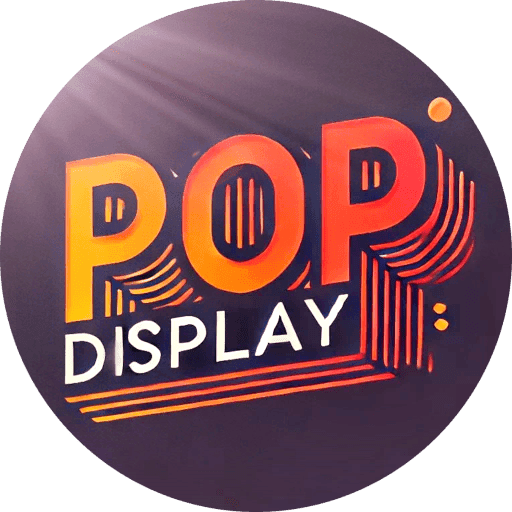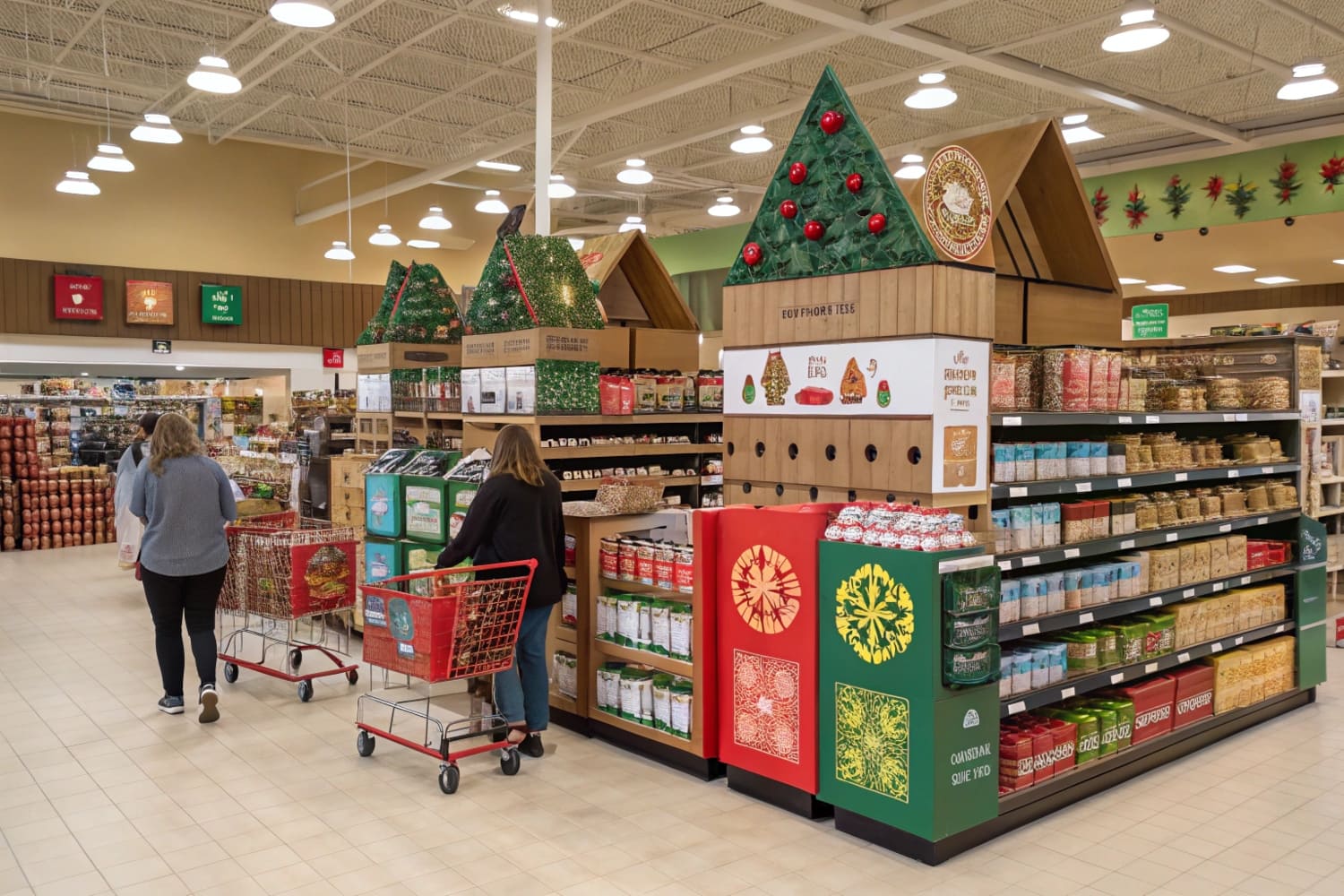Le marchandisage visuel est plus que de simplement placer des produits sur une étagère. C'est une forme de narration à travers la conception et la disposition des produits pour améliorer l'expérience d'achat. Dans l'environnement de vente au détail compétitif d'aujourd'hui, le merchandisage visuel est essentiel pour attirer et retenir les clients.
Le marchandisage visuel est l'art d'afficher des produits d'une manière qui attire l'attention, augmente les ventes et améliore l'expérience client. Il combine des stratégies de conception, de psychologie et de vente au détail pour créer des arrangements de produits visuellement attrayants.
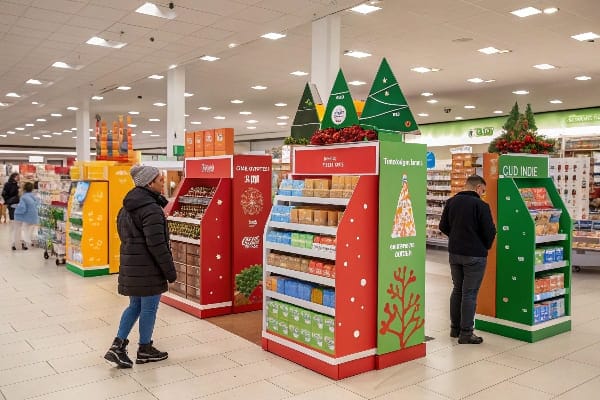
Il s'agit d'un puissant outil de marketing qui peut avoir un impact sur ce que les clients pensent à propos d'un magasin et influencent leurs décisions d'achat. En utilisant les bonnes couleurs, l'éclairage et les placements de produits, le merchandising visuel crée une impression durable et élève l'expérience d'achat.
Quelle est la signification du merchandising visuel?
Le marchandisage visuel joue un rôle central dans le commerce de détail, non seulement pour l'esthétique mais comme un moteur clé des ventes. Comprendre sa signification aide les entreprises à créer des stratégies efficaces qui résonnent avec leur public cible.
Le marchandisage visuel fait référence à la pratique de l'organisation stratégique des produits et de l'utilisation de techniques de conception pour mettre en évidence les marchandises du magasin et créer une expérience d'achat engageante.

Pour les entreprises comme la mienne, Visual Merchandising 1 est essentiel pour attirer l'attention des clients, en particulier lorsqu'il est en concurrence sur des marchés bondés. En vous concentrant sur la présentation des produits 2 , vous pouvez guider le parcours du client et stimuler les conversions. Un affichage bien marqué rend l' expérience de magasinage 3 plus agréable et encourage les achats d'impulsions.
Les composantes clés du merchandising visuel
Pour mieux comprendre le merchandising visuel, décomposons-le dans les éléments qui le réussissent. Ces composants, lorsqu'ils sont combinés efficacement, garantissent que les écrans fonctionnent ensemble pour maximiser à la fois l'attrait esthétique et les ventes.
| Élément | Description |
|---|---|
| Placement de produit4 | Positionnement stratégique des produits pour un accès et une visibilité faciles. |
| Éclairage5 | Utilisation de la lumière pour mettre en évidence les produits et définir l'humeur. |
| Signalisation | Utilisation de la signalisation claire et séduisante pour guider les clients. |
| Schéma de couleurs6 | Sélection des couleurs qui créent une atmosphère visuellement attrayante et améliorent les caractéristiques du produit. |
Chaque élément joue un rôle crucial dans la communication avec l'acheteur et les guider à travers le magasin, ce qui a finalement un impact sur leurs décisions d'achat.
Que fait exactement un marchandiseur visuel?
Un marchandiseur visuel est la personne chargée de donner vie à la conception d'un magasin. Ce rôle nécessite un mélange de créativité, de compréhension des entreprises et d'un œil vif pour les détails. Mais qu'implique exactement ce rôle?
Un marchandiseur visuel conçoit et organise les affichages du produit dans un espace de vente au détail, créant des dispositions visuellement attrayantes qui attirent les clients et améliorent leur expérience d'achat. Ils utilisent des connaissances sur les principes de conception et la psychologie des consommateurs pour stimuler les ventes.

Les marchands visuels ne sont pas seulement des artistes; Ce sont également des penseurs stratégiques. Ils prévoient des placements de produits 7 en fonction de la saisonnalité, des objectifs de vente et de la disposition des magasins 8 . Leur rôle consiste souvent à travailler en étroite collaboration avec les équipes marketing et les directeurs des ventes pour s'assurer que les écrans sont non seulement attrayants mais également alignés sur les objectifs globaux de la marque. Ils peuvent également former du personnel de vente au détail pour maintenir les écrans ou les ajuster en fonction des besoins en magasin.
Les responsabilités quotidiennes
Une journée typique pour un marchandiseur visuel 9 consiste à analyser le trafic piétonnier du magasin 10 , à examiner les rapports de vente et à effectuer des ajustements aux affichages en conséquence. Ils utilisent des compétences créatives pour concevoir des affichages de fenêtres 11 , des mises en page en magasin et des configurations promotionnelles. Ils doivent également rester au-dessus des tendances pour garder les écrans frais et engageants.
Quels sont les 4 éléments du merchandising visuel?
Comprendre les éléments fondamentaux du merchandising visuel est essentiel pour quiconque cherche à créer des écrans de vente au détail réussis. Ces éléments influencent la façon dont les clients perçoivent le magasin et guident leur comportement d'achat.
Les quatre principaux éléments du merchandisage visuel sont le placement des produits, l'éclairage, la signalisation et la palette de couleurs. Chacun joue un rôle dans l'amélioration de l'expérience d'achat et la conduite des ventes.
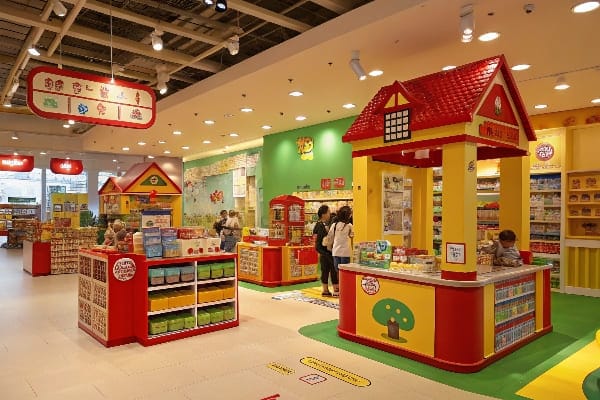
Ces éléments doivent travailler ensemble de manière transparente. Par exemple, un bon placement de produit 12 garantit que les articles à haute demande sont facilement accessibles, tandis que Good Lighting 13 met en évidence les produits clés. La signalisation fournit de la clarté et guide le parcours du client, et la bonne palette de couleurs 14 évoque les bonnes émotions et rend le magasin accueillant.
Comment ces éléments fonctionnent ensemble
En combinant efficacement ces quatre éléments, vous pouvez créer un environnement qui encourage les clients à explorer et à acheter des produits. Par exemple, l'éclairage 15 peut être utilisé pour mettre en lumière un produit, tandis que Bold Signage 16 attire l'attention sur les remises ou les promotions. Une palette de couleurs cohésive 17 lie tout ensemble, créant une atmosphère agréable et engageante.
Qu'est-ce qu'un exemple de merchandising visuel?
Des exemples de merchandisage visuel sont tout autour de nous, des dernières fenêtres de mode aux étalages de produits en magasin. Mais qu'est-ce qui fait que ces écrans réussissent exactement et comment les entreprises peuvent-elles les appliquer à leur avantage?
Un exemple de merchandising visuel pourrait être un affichage saisonnier dans un magasin qui met en évidence les produits liés à des vacances particulières, en utilisant le placement créatif de produits, l'éclairage thématique et les couleurs festives pour attirer l'attention et augmenter les ventes.
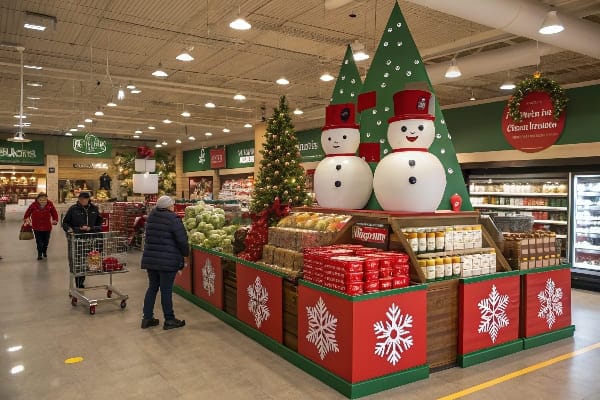
Jetez un œil à la façon dont les magasins décorent pour des vacances comme Noël ou Halloween. L'ensemble de la disposition du magasin 18 , de la fenêtre affiche 19 aux étagères à l'intérieur, est transformé pour refléter le thème. Les produits sont regroupés d'une manière qui encourage l'achat d'impulsions 20 , et les couleurs, l'éclairage et la signalisation fonctionnent ensemble pour créer un affichage cohérent et engageant.
Appliquer le merchandising visuel à votre magasin
Pour les entreprises comme la mienne, Visual Merchandising 21 joue un rôle énorme dans la façon dont les clients s'engagent avec nos produits. Qu'il s'agisse de l'utilisation des affichages saisonniers 22 ou de la création d'une 23 centrée sur le produit , il s'agit de créer une expérience visuelle convaincante qui motive le client à faire un achat.
Conclusion
Le marchandisage visuel est une stratégie essentielle pour toute entreprise qui souhaite stimuler les ventes et améliorer l'expérience client. En vous concentrant sur le placement des produits, l'éclairage, la signalisation et les schémas de couleurs, vous pouvez créer des écrans qui captivent et convertissent les clients.
Explorez ce lien pour découvrir des stratégies efficaces qui peuvent améliorer vos efforts de marchandisage visuel et attirer plus de clients. ↩
Comprendre l'influence de la présentation des produits peut vous aider à optimiser vos écrans et à augmenter les ventes. ↩
Découvrez les facteurs essentiels qui contribuent à une expérience d'achat positive, ce qui peut conduire à une satisfaction et une fidélité des clients plus élevés. ↩
Explorez ce lien pour découvrir des stratégies efficaces pour le placement des produits qui peuvent améliorer la visibilité et les ventes dans votre magasin. ↩
Comprendre l'impact de l'éclairage peut vous aider à créer une atmosphère accueillante qui stimule l'engagement et les ventes des clients. ↩
Découvrez la psychologie des couleurs et comment choisir les bons schémas de couleurs pour attirer les clients et améliorer l'attrait des produits. ↩
L'exploration de l'impact des placements de produits peut vous aider à optimiser votre espace de vente au détail pour de meilleures ventes. ↩
L'apprentissage de la conception efficace de la disposition des magasins peut considérablement augmenter les performances de votre magasin et l'expérience client. ↩
Comprendre le rôle d'un marchandiseur visuel peut améliorer vos connaissances sur les stratégies de vente au détail et l'engagement des clients. ↩
L'apprentissage de l'analyse du trafic piétonnier peut aider à améliorer la disposition des magasins et à augmenter les ventes grâce à une meilleure gestion du flux des clients. ↩
L'exploration des techniques de conception d'affichage des fenêtres peut inspirer la créativité et attirer plus de clients dans votre magasin. ↩
Comprendre le placement des produits peut améliorer votre stratégie de vente au détail, ce qui rend votre magasin plus attrayant et accessible aux clients. ↩
L'exploration de l'impact de l'éclairage peut vous aider à créer une atmosphère accueillante qui stimule les ventes et la satisfaction des clients. ↩
L'apprentissage des schémas de couleurs peut transformer l'ambiance de votre magasin, influençant les émotions des clients et les comportements d'achat. ↩
Comprendre l'impact de l'éclairage peut vous aider à créer une expérience d'achat plus accueillante qui stimule les ventes. ↩
Explorez comment la signalisation audacieuse peut attirer efficacement les clients et mettre en évidence les promotions, en améliorant votre stratégie marketing. ↩
Découvrez comment une palette de couleurs cohésive peut améliorer l'expérience client et l'identité de marque, ce qui rend votre magasin plus attrayant. ↩
L'exploration des stratégies de mise en page des magasins peut fournir un aperçu de l'optimisation de l'expérience et des ventes des clients. ↩
L'apprentissage des techniques d'affichage des fenêtres peut attirer considérablement les clients et augmenter le trafic piétonnier. ↩
Comprendre les achats impulsifs peut aider les détaillants à améliorer les ventes grâce à des stratégies d'affichage efficaces. ↩
Comprendre le merchandising visuel peut améliorer l'attrait de votre magasin et stimuler les ventes. Explorez cette ressource pour apprendre des stratégies efficaces. ↩
Les écrans saisonniers peuvent attirer des clients et augmenter les ventes. Découvrez des idées innovantes à mettre en œuvre dans votre magasin. ↩
Une disposition centrée sur le produit peut optimiser le flux des clients et améliorer l'expérience d'achat. En savoir plus sur ses avantages. ↩
